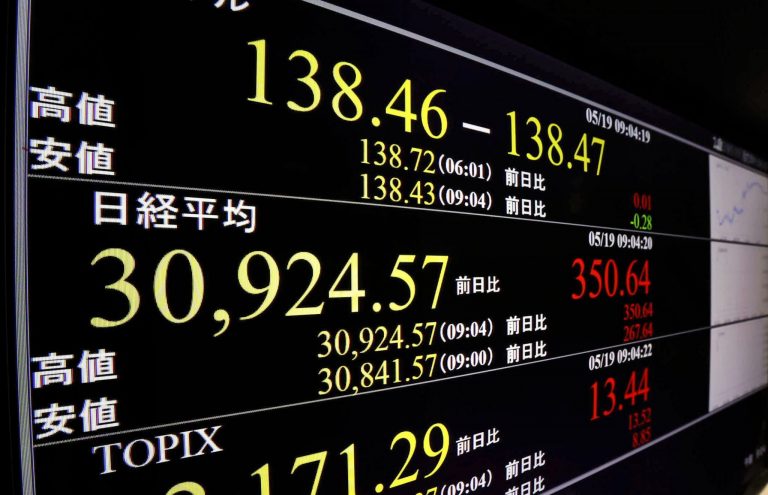
The Nikkei 225 index has experienced a significant drop recently. On April 7, 2025, reports indicated that it fell nearly 8% in early trading, reaching its lowest level since October 2023. This sharp decline was part of a broader global market reaction, largely triggered by concerns over U.S. tariff hikes and fears of a potential global trade recession, compounded by China’s retaliatory measures. The sell-off reflects heightened investor anxiety about Japan’s export-driven economy and the unwinding of financial strategies like the yen carry trade, where investors borrow in yen at low rates to invest elsewhere—a strategy that’s been disrupted by shifting rates and rising volatility.
Trading in Nikkei futures was briefly halted due to the steep losses, underscoring the intensity of the market turmoil. This aligns with the sentiment and data circulating on platforms like X and various news outlets tracking the event. The decline of the Nikkei 225, which dropped over 7% to its lowest level since October 2023 as of April 7, 2025, has been fueled by a combination of global economic pressures and market dynamics. The primary driver is the escalation of U.S. tariffs under President Donald Trump, with reports indicating steep duties—up to 24% on Japanese goods and 25% on car imports.
These tariffs have raised costs for Japanese exporters, particularly in key sectors like automobiles and electronics, which are vital to Japan’s economy. This has eroded corporate revenues and investor confidence, sparking fears of a broader global trade recession. China’s retaliatory measures have further intensified the pressure, amplifying the sense of a looming trade war. Another significant factor is the strengthening yen, which has disrupted the yen carry trade—a strategy where investors borrow in yen at low rates to invest in higher-yielding assets elsewhere. As U.S. interest rate expectations shift and volatility rises, the unwinding of these trades has added downward pressure on Japanese stocks.
Register for Tekedia Mini-MBA edition 19 (Feb 9 – May 2, 2026): big discounts for early bird.
Tekedia AI in Business Masterclass opens registrations.
Join Tekedia Capital Syndicate and co-invest in great global startups.
Register for Tekedia AI Lab: From Technical Design to Deployment (next edition begins Jan 24 2026).
The Nikkei’s export-heavy composition makes it particularly vulnerable to these currency shifts, as a stronger yen reduces the competitiveness of Japanese goods abroad. Additionally, the Bank of Japan’s (BOJ) recent moves, such as raising rates to 0.25% in 2024 and signaling further hikes, have tightened financial conditions, contrasting with global markets anticipating U.S. rate cuts amid recession fears. The implications are wide-ranging. For Japan, the immediate economic fallout includes a potential 0.5% dip in household spending and a 2.3% real drop in worker household income, despite nominal wage gains, as economic growth prospects dim.
The banking sector, exemplified by an 11% plunge in shares of Mitsubishi UFJ Financial Group, faces heightened risk, with the banking index down over 17% at one point, reflecting broader market distress. Globally, the Nikkei’s slide has contributed to a synchronized market rout, with European indices like Germany’s DAX falling 9% and Asian markets like Hong Kong’s Hang Seng dropping 13%. This suggests a contagion effect, where tariff-induced uncertainty undermines investor sentiment worldwide. Looking ahead, the Nikkei could face further declines—some analysts suggest a drop to 32,000—if trade tensions persist and the yen continues to strengthen.
However, opportunities may emerge in sectors less exposed to tariffs or poised to benefit from domestic policy shifts, though these are overshadowed by recession fears. The BOJ might adjust monetary policy if inflation expectations rise, but its room to maneuver is limited by global headwinds. For investors, the heightened volatility—evidenced by circuit breakers halting Nikkei futures trading—signals a need for caution, as the interplay of trade policy, currency movements, and central bank actions continues to shape an uncertain economic landscape.


